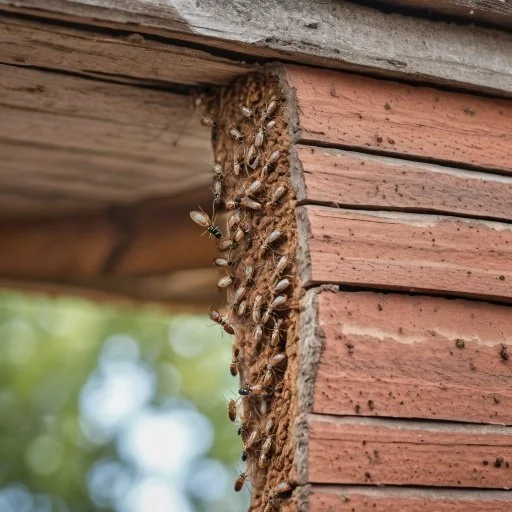TERMITES
Termites are a common pest in New York, and they can cause significant damage to wooden structures. The state is home to a few notable species of termites, primarily subterranean termites and drywood termites, each with distinct characteristics and potential for damage. Below is an overview of the different termite species in New York and the extent of the damage they can cause:
1. Eastern Subterranean Termite (Reticulitermes flavipes)
Description: The Eastern subterranean termite is the most common species found in New York. These termites live in large colonies, typically underground, and they are highly social insects. They are light yellow to brown in color, with workers being small and white, while the reproductive swarmers are dark brown to black.
Damage Potential: Subterranean termites cause the majority of damage in New York. They feed on wood, paper, and other cellulose-containing materials, creating hollowed-out wood as they tunnel through it. They can cause extensive structural damage to homes, particularly to wooden beams, framing, and flooring. Over time, their damage can compromise the integrity of a building, leading to expensive repairs.
2. Formosan Subterranean Termite (Coptotermes formosanus)
Description: The Formosan subterranean termite is an invasive species, originally from Asia. It is larger than the Eastern subterranean termite and has a more aggressive feeding behavior. They are light yellow or brown with darker heads and are known to form large colonies that can contain millions of termites.
Damage Potential: Formosan termites are more destructive than native subterranean termites because of their larger colony sizes and more voracious appetites. They can cause significant structural damage, often going unnoticed until severe damage has occurred. Their colonies are capable of damaging entire buildings, and they can be more difficult to control due to their aggressive nature.
3. Drywood Termite (Incisitermes minor)
Description: Drywood termites are less common in New York than subterranean species, but they still pose a risk, particularly in warmer, coastal areas. Unlike subterranean termites, drywood termites do not need contact with the soil to survive. They nest inside the wood they consume and are often found in areas with high humidity. These termites are typically light brown or reddish-brown.
Damage Potential: Drywood termites can be highly destructive in situations where the wood is exposed and accessible, such as in furniture, wooden beams, and window sills. Their damage is typically more localized but can still lead to costly repairs, especially if an infestation goes undetected for an extended period.
4. Rhinotermitidae Family (Various Species)
Description: There are several other species of subterranean termites in the Rhinotermitidae family that can be found in New York, though they are less common. These species tend to have similar characteristics to the Eastern subterranean termite, with workers being cream-colored and swarmers being dark brown to black.
Damage Potential: These termites cause similar damage to other subterranean termites, feeding on wood, which leads to the weakening of structural integrity. Though not as destructive as the Eastern or Formosan subterranean termites, they still have the potential to cause damage over time.

